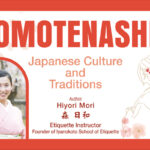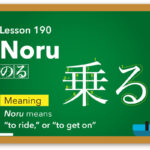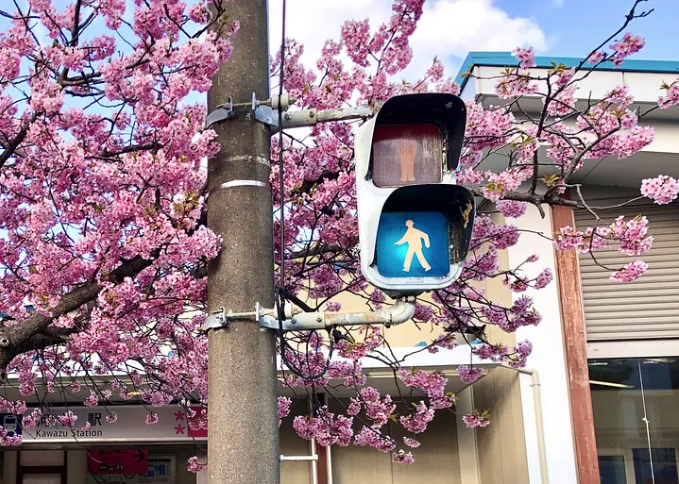
Traffic lights in Japan are red, yellow, and blue. Or are they red, yellow, and green? Well…it depends on what you mean by blue and green.
The traffic lights themselves are usually (but not always, more about that later) bright green, the same as in the rest of the world. But in Japanese, they’re called blue — ao (青) — rather than midori (緑) — green.
If you point at a traffic light and say “midori!” you’ll get only confused stares from your Japanese friends. They won’t understand you’re telling them the light is green so get your ass in gear. Instead they’ll wonder why you’re pointing at plants or trees somewhere.
This quirk of the Japanese language trips up every new learner. It makes a good test for automated translation. But why are traffic lights called blue in Japanese instead of green? This seemingly simple question takes us down a fascinating rabbit hole of language, culture, and history.
The Japanese Color Wheel
Colors in Japan were originally organized into a wheel of 5 colors called goshiki (五色) that was brought from China. It included only the primary colors:
- Ao (青) — blue
- Ki(iro) (黄) — yellow
- Aka (赤) — red
- Kuro (黒) — black
- Shiro (白) — white
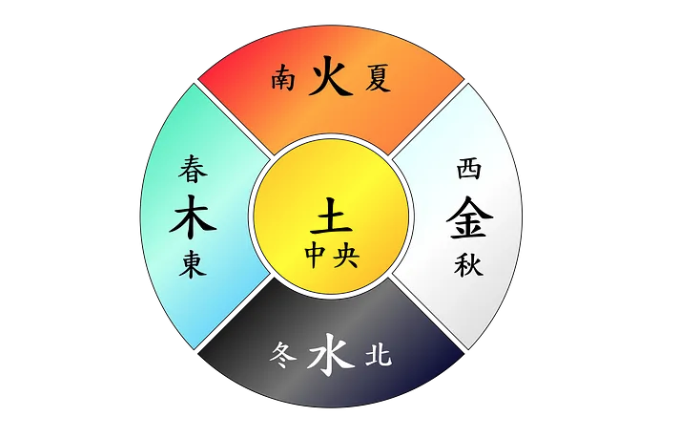
In China, the character 青 meant blue, as in the color of the sky, but in Japan, green was already considered the primary color when kanji began to be used, so the character and word ao ended up meaning both blue and green. Just to be even more confusing, the same word, ao, was used for gray, as well.
This has given us many words in Japanese that use ao/blue to mean things that are actually green:
- aoba (青葉) — fresh leaves
- aoao (青々) — verdant
- seiji (青磁) — celadon
Even figurative speech uses the word for blue where in English, we would use green. For example, seinen 青年, literally blue years, means an adolescent — someone who’s green behind the ears.
The color wheel also took on other meanings tied to the horoscope. With yellow at the center, blue, red, white, and black represented the 4 seasons and the 4 directions.
The 5 colors were used to represent the 5 planets, the 5 days of the week (skipping sun/Sunday and the moon/Monday), and the 5 elements.
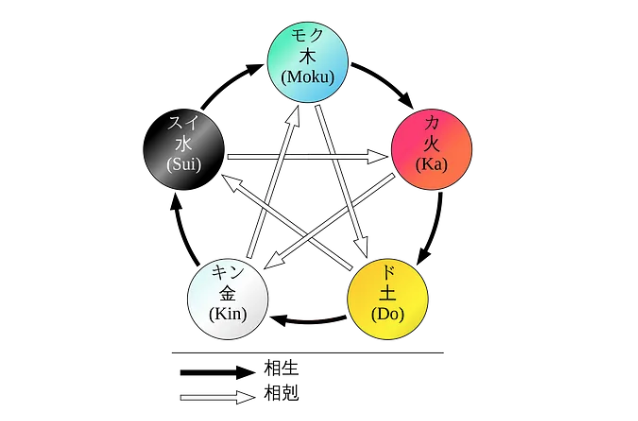
Beyond 5 Colors
In a world before Crayola crayons with burnt sienna and raw umber, everything was considered to be one of these five primary colors.
Of course, words for other colors existed, such as murasaki (紫) which means purple. But unlike the 5 primary colors, murasaki is a color by analogy, the color of a thing — the purple gromwell plant which was used to create purple dyes for kimono and obi.
Midori (緑), too, is a color only by analogy. The word means plants and greenery, and thus the color of leaves. Midori-iro (緑色) — the color of greenery — is the full, original word, but that’s gotten shortened to simply midori meaning either greenery or the color green.
This is actually no different than English, where the word ‘blue’ is derived from the Old High German word blāo meaning the color blue, but the word ‘green’ comes from the old English word grōwan meaning to grow and only became a color by analogy with greenery later.
Other non-primary colors in Japanese are also colors by analogy:
- cha-iro (茶色): brown — the color of tea
- hai-iro (灰色): grey — the color of ash
- momo-iro (桃色): pink — color of peach
Nowadays, though, every color has a katakana loanword such as orenji オレンジ and pinku ピンク. There’s even a Japanese word for burnt sienna バーントシェンナ and cerulean blue セルリアンブルー.
But Why Ao Instead of Midori?
When the first traffic light was installed in Hibiya, Tokyo in 1930, it was well past the days of Genji and into the modern era. Paints and inks were sold in shops in every conceivable color. Green was midori and ao meant blue.
Midori/green would have been a more accurate way to describe the bright green color of the traffic light that had been imported from the U.S. But ao/blue was the word for the primary color, and traffic lights of red, yellow, blue had a nice symmetry in Japanese. It’s the same reason in English we call it a light red instead of a carnelian even though that’s the correct name for the shade of red used in traffic lights.
So when newspapers of the era described the light as ao-shingō (青信号), the term stuck with the population, even though the correct legal term was actually midori-iro shingō (緑色信号) until the traffic laws were updated in 1947.
But What Color Is It Really?
Traffic signals are bright green everywhere in the world. But that’s not always the case in Japan.
Most traffic lights and walk signals are indeed green, but not all. Many are actually blue or a shade of blue-green like the pedestrian signal in the photo taken by Yuko Tamura at the top of this article.
As you walk around Japan, look closely at the traffic lights. Are they blue or green?
Then make sure to wait for the light to turn blue before proceeding through the intersection.
・・・
If you enjoy my articles on Japanese language and culture, you’ll love my novel, To Kill a Unicorn, about a Japanese hacker in Silicon Valley. Available now in ebook and paperback.
.
『Learn Japan Deeply with DC!』
Writer: DC Palter
Read DC’s Stories More at Japonica Publication ( medium.com/japonica-publication )
(2/16/2023)
.
.



